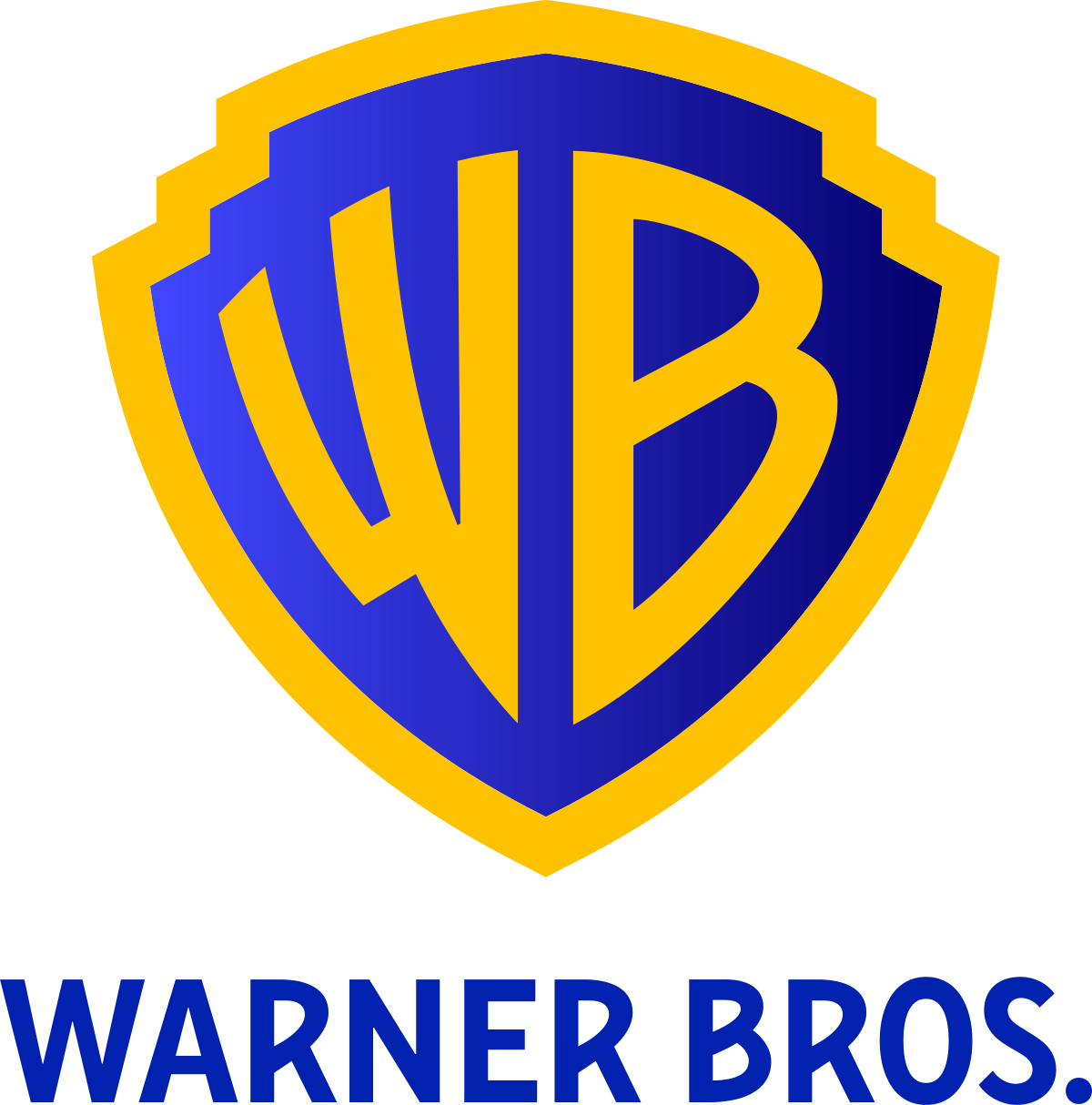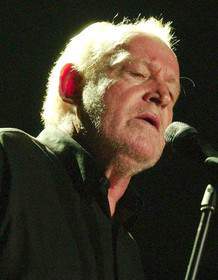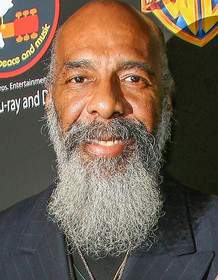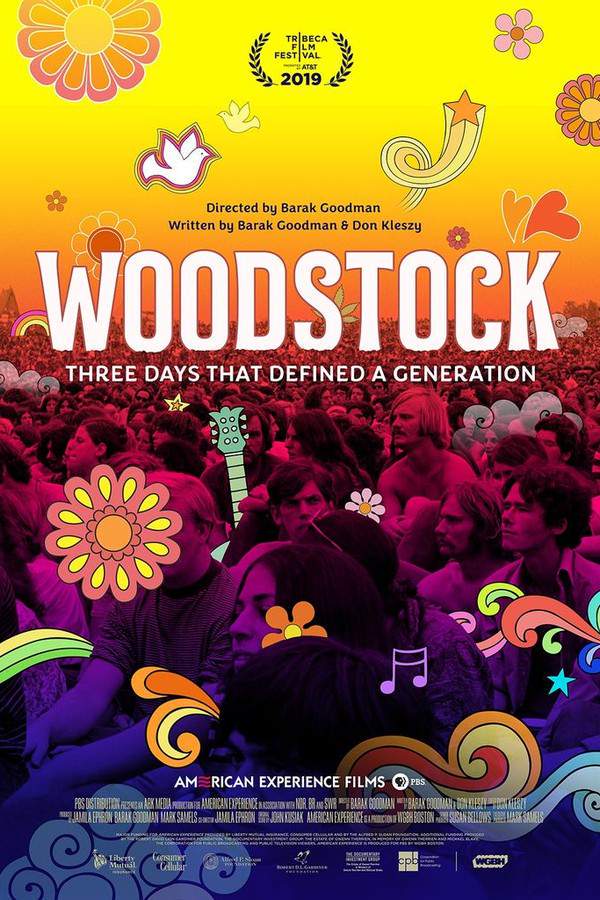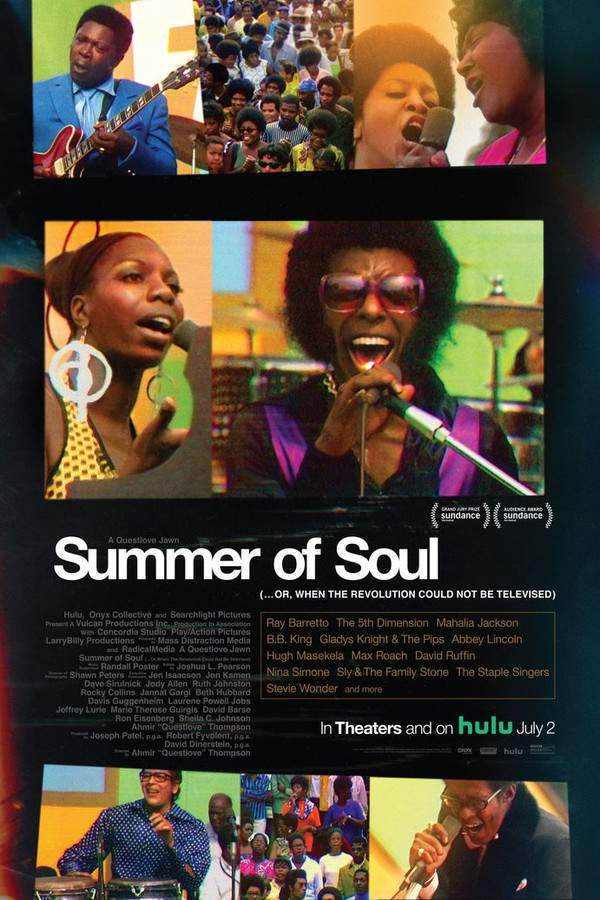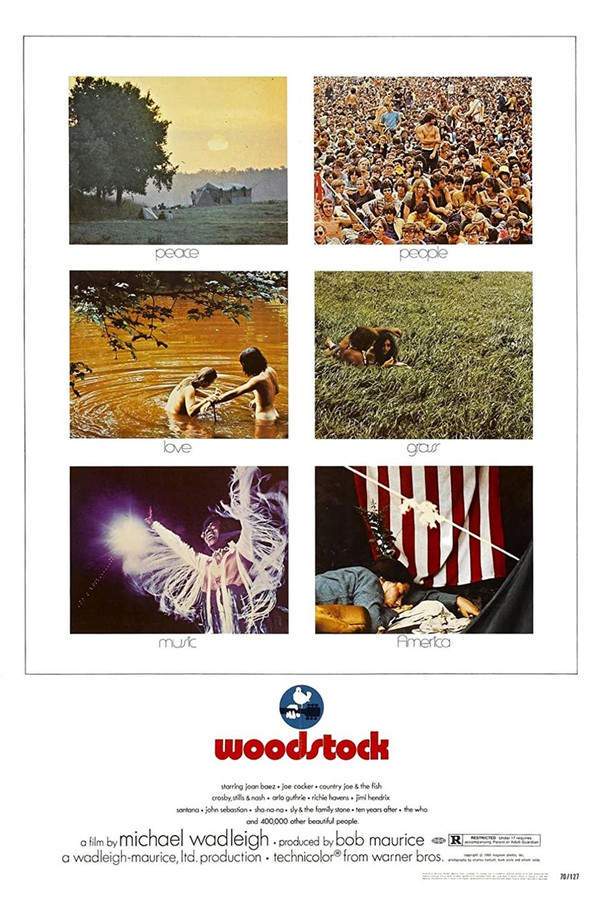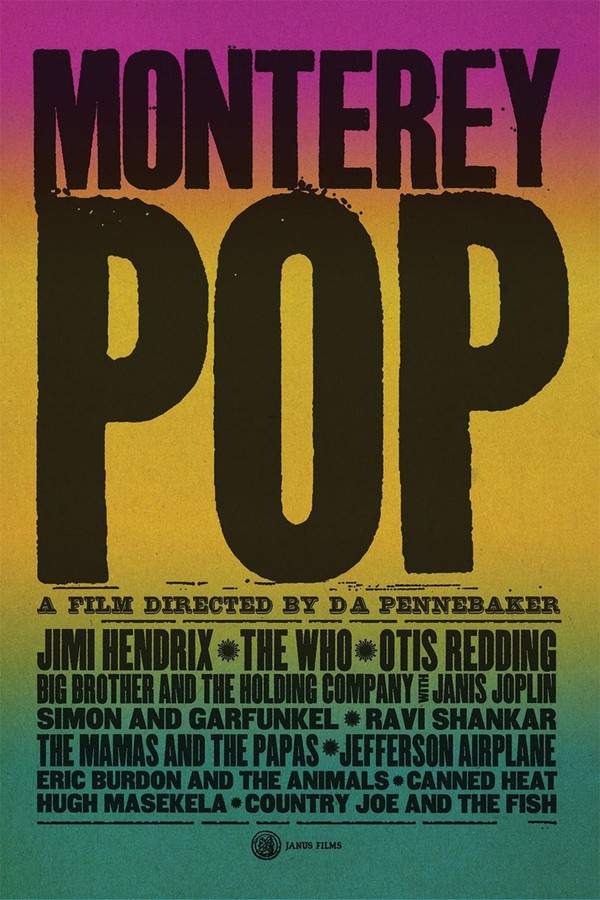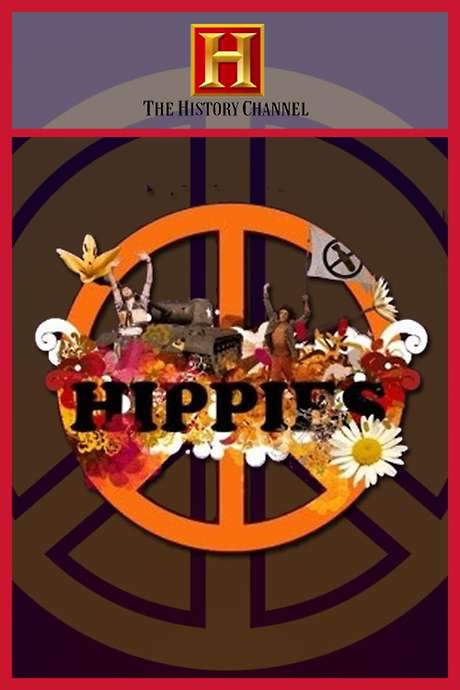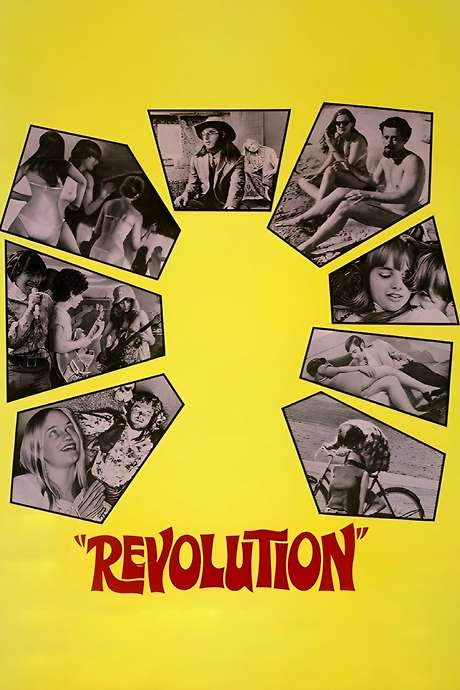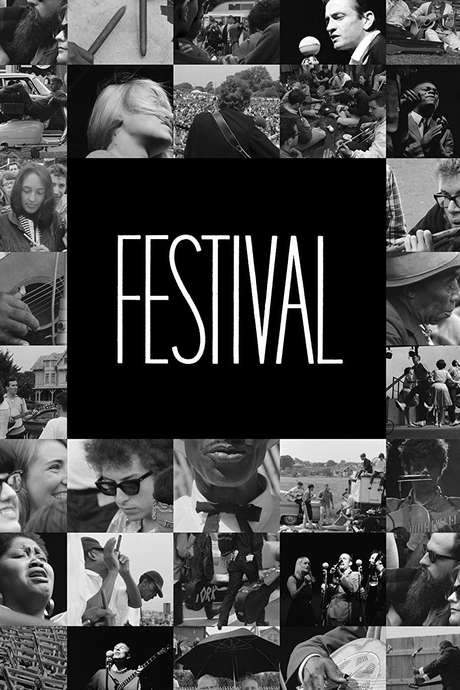Woodstock 1970
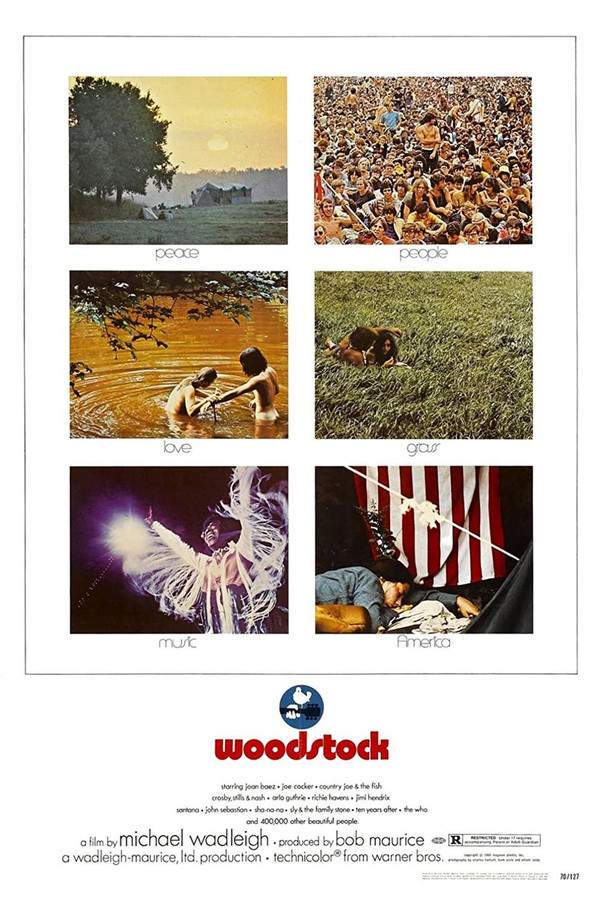
In 1969, a sprawling music festival took place on a farm in upstate New York, becoming a pivotal moment in cultural history. The Woodstock Music & Art Fair attracted over half a million people seeking freedom and self-expression through music. Despite challenging weather conditions, the event showcased a diverse lineup of legendary performers and fostered a sense of unity and shared experience that resonated deeply with a generation. A dedicated camera crew documented the three days, preserving the spirit of the festival and its enduring legacy.
Does Woodstock have end credit scenes?
No!
Woodstock does not have end credit scenes. You can leave when the credits roll.
Meet the Full Cast and Actors of Woodstock
Explore the complete cast of Woodstock, including both lead and supporting actors. Learn who plays each character, discover their past roles and achievements, and find out what makes this ensemble cast stand out in the world of film and television.
External Links and Streaming Options
Discover where to watch Woodstock online, including streaming platforms, rental options, and official sources. Compare reviews, ratings, and in-depth movie information across sites like IMDb, TMDb, Wikipedia or Rotten Tomatoes.
Ratings and Reviews for Woodstock
See how Woodstock is rated across major platforms like IMDb, Metacritic, and TMDb. Compare audience scores and critic reviews to understand where Woodstock stands among top-rated movies in its genre.

95
Metascore
8.5
User Score

8.1 /10
IMDb Rating

75
%
User Score
Take the Ultimate Woodstock Movie Quiz
Challenge your knowledge of Woodstock with this fun and interactive movie quiz. Test yourself on key plot points, iconic characters, hidden details, and memorable moments to see how well you really know the film.
Woodstock 1970 Quiz: Test your knowledge on the iconic Woodstock Music and Art Fair of 1969 through this diverse quiz.
What year did the Woodstock Music and Art Fair take place?
1968
1970
1971
1969
Show hint
Awards & Nominations for Woodstock
Discover all the awards and nominations received by Woodstock, from Oscars to film festival honors. Learn how Woodstock and its cast and crew have been recognized by critics and the industry alike.
43rd Academy Awards 1971
Documentary (Feature)
Film Editing
Sound
Full Plot Summary and Ending Explained for Woodstock
Read the complete plot summary of Woodstock, including all major events, twists, and the full ending explained in detail. Explore key characters, themes, hidden meanings, and everything you need to understand the story from beginning to end.
The film captures the vibrant and transformative moments of the Woodstock Music and Art Fair, a monumental event that took place over three unforgettable days in August 1969 near Bethel, New York. It provides a unique perspective on the performers and the diverse reactions of the 400,000 attendees alongside the local community. Opening with the captivating melody of “Long Time Gone” and “Wooden Ships” performed by Crosby, Stills & Nash, we witness the bustling activity as stagehands meticulously set up the platform for the musicians. The arrival of excited fans is depicted, their numbers swelling by the thousands.
Throughout the documentary, we hear insights from festival promoter Michael Lang, alongside rock promoter Bill Graham, who shares his expertise on managing the crowd’s energy. The lineup of legendary performers includes the likes of Richie Havens, Canned Heat, Joan Baez, The Who, Sha-Na-Na, Joe Cocker, Country Joe and the Fish, Arlo Guthrie, Crosby, Stills & Nash, Ten Years After, Jefferson Airplane, John Sebastian, Santana, Sly and the Family Stone, Janis Joplin, and Jimi Hendrix.
The film intersperses interviews with members of the counterculture, alongside local farmers, merchants, and law enforcement, many of whom express their discontent regarding neighbor Max Yasgur’s decision to host the concert on his farm. The chaos of nature is felt as a storm rolls in, soaking the audience and transforming the field into a muddy spectacle. Audiences can be seen enjoying mud-sliding contests amidst the downpour, while the counterculture’s spirit radiates through the smoking of marijuana and stronger substances, including poignant anti-Vietnam War sentiments.
Notable moments capture quick glimpses of the iconic Janis Joplin and Jerry Garcia, alongside scenes depicting medical assistance and nourishment provided by the Army, illustrating the communal effort of support and survival. The film draws to a close with a breathtaking aerial view of the colossal crowd, unified in their elation and fervor, as they cheer, encapsulating the essence of an era defined by peace, love, and music.
Uncover the Details: Timeline, Characters, Themes, and Beyond!

Coming soon on iOS and Android
The Plot Explained Mobile App
From blockbusters to hidden gems — dive into movie stories anytime, anywhere. Save your favorites, discover plots faster, and never miss a twist again.
Sign up to be the first to know when we launch. Your email stays private — always.
Watch Trailers, Clips & Behind-the-Scenes for Woodstock
Watch official trailers, exclusive clips, cast interviews, and behind-the-scenes footage from Woodstock. Dive deeper into the making of the film, its standout moments, and key production insights.
Woodstock Themes and Keywords
Discover the central themes, ideas, and keywords that define the movie’s story, tone, and message. Analyze the film’s deeper meanings, genre influences, and recurring concepts.
Woodstock Other Names and Titles
Explore the various alternative titles, translations, and other names used for Woodstock across different regions and languages. Understand how the film is marketed and recognized worldwide.
Similar Movies To Woodstock You Should Know About
Browse a curated list of movies similar in genre, tone, characters, or story structure. Discover new titles like the one you're watching, perfect for fans of related plots, vibes, or cinematic styles.
Quick Links: Summary, Cast, Ratings, More

What's After the Movie?
Not sure whether to stay after the credits? Find out!
Explore Our Movie Platform
New Movie Releases (2025)
Famous Movie Actors
Top Film Production Studios
Movie Plot Summaries & Endings
Major Movie Awards & Winners
Best Concert Films & Music Documentaries
Movie Collections and Curated Lists
© 2025 What's After the Movie. All rights reserved.


